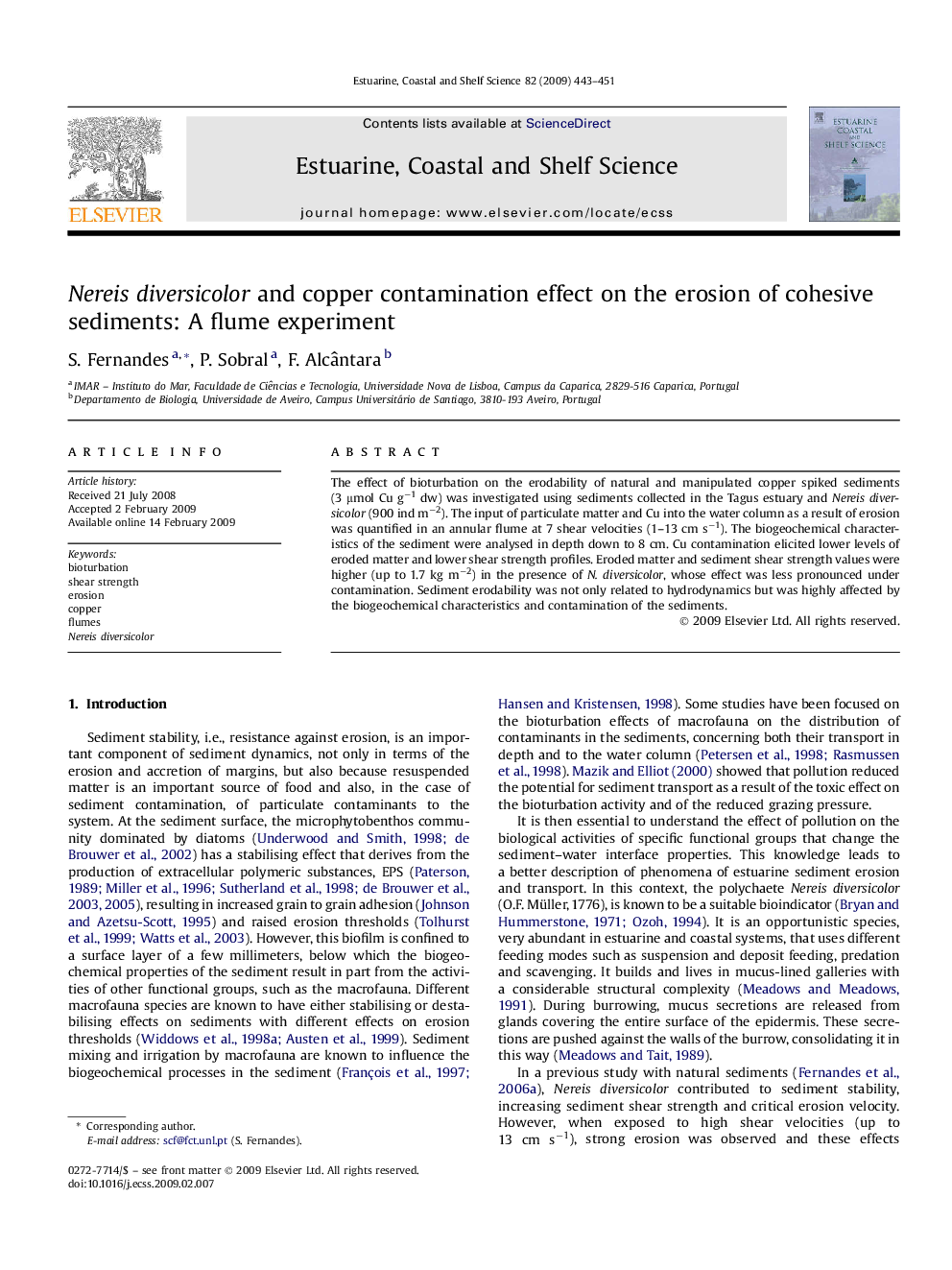| Article ID | Journal | Published Year | Pages | File Type |
|---|---|---|---|---|
| 4540965 | Estuarine, Coastal and Shelf Science | 2009 | 9 Pages |
The effect of bioturbation on the erodability of natural and manipulated copper spiked sediments (3 μmol Cu g−1 dw) was investigated using sediments collected in the Tagus estuary and Nereis diversicolor (900 ind m−2). The input of particulate matter and Cu into the water column as a result of erosion was quantified in an annular flume at 7 shear velocities (1–13 cm s−1). The biogeochemical characteristics of the sediment were analysed in depth down to 8 cm. Cu contamination elicited lower levels of eroded matter and lower shear strength profiles. Eroded matter and sediment shear strength values were higher (up to 1.7 kg m−2) in the presence of N. diversicolor, whose effect was less pronounced under contamination. Sediment erodability was not only related to hydrodynamics but was highly affected by the biogeochemical characteristics and contamination of the sediments.
